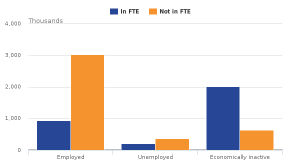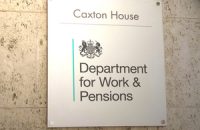UK Labour Market 2017
The latest ONS data shows that the UK currently has the highest employment rate since records began, a record high of 74.6%.
The latest figures cover October – December 2016 with seasonal adjustments reflected.
The Headlines
- Over 300,000 more people in work compared to the same time last year
- Unemployment continues to run at an 11-year low of just 4.8%
- Full-time work continues to drive the increase in employment, rising by 218,000 workers on the year
- The number of people claiming benefits (claimant count) fell by 42,000 on the quarter to 2.1% – the lowest rate since 1974
- The number of disabled people in work has increased by 594,000 in the past 3 years
Youth Employment figures
Within this data set young people are defined as those aged 16 – 24. Young people in full-time education are included in the employment estimates if they have a part-time job and are included in the unemployment estimates if they are seeking part-time work.
- Youth unemployment is at 12.6% – the lowest level since 2005
- 3.95 million people in work (including 928,000 full-time students with part-time jobs)
- 568,000 unemployed people (including 199,000 full-time students looking for part-time work)
- 2.65 million economically inactive people, most of whom (2.01 million) were full-time students
Since records began (in 1992) the unemployment rate of those aged 16 to 24 has been consistently higher than older age groups.
What does this mean for young people?

Youth unemployment has fallen this quarter. There are 568,000 unemployed young people and 369,000 (5.2% of the youth population) who are unemployed and not in full-time education.
The proportion of unemployed young people (not counting students) who are not claiming Jobseeker’s Allowance and therefore are not receiving official help with job search is now 50.4%. (Data taken from Learning and Work, Labour Market Analysis)
Estimates for those young people who were Not in Education, Employment or Training for this same period (October – December) will be available on 22nd February
Secretary of State, Damian Green:
“With employment at its highest rate since records began, and unemployment at its lowest in over a decade, we remain in a position of strength.
Our on-going welfare reforms will continue to incentivise work and make sure the system is fair to all those who need it and those who pay for it.
With youth unemployment down, women in work at record levels and number of disabled people in work increasing too, we’re delivering on our pledge to build a country that works for everyone”
Youth Employment UK’s Comment
“It is always good to see a rise in the number of people in work and reductions to the number of young people not in education, employment or training. Counting young people in the employment data when they are on work experience or training programmes as part of their job seeker support can create some misunderstandings when the figures are only looked at from a top level.
We believe that this year is going to be a challenging year for young people, with Universal Credit roll out, the changes to support for young people through the new Youth Obligation and other changes that will affect youth employment such as the Apprenticeship and Further Education reform. To this end we feel that we must continue to challenge government to ensure that all young people are receiving the appropriate support they need to move successfully into sustainable and high quality employment. ” Laura-Jane Rawlings, CEO.







